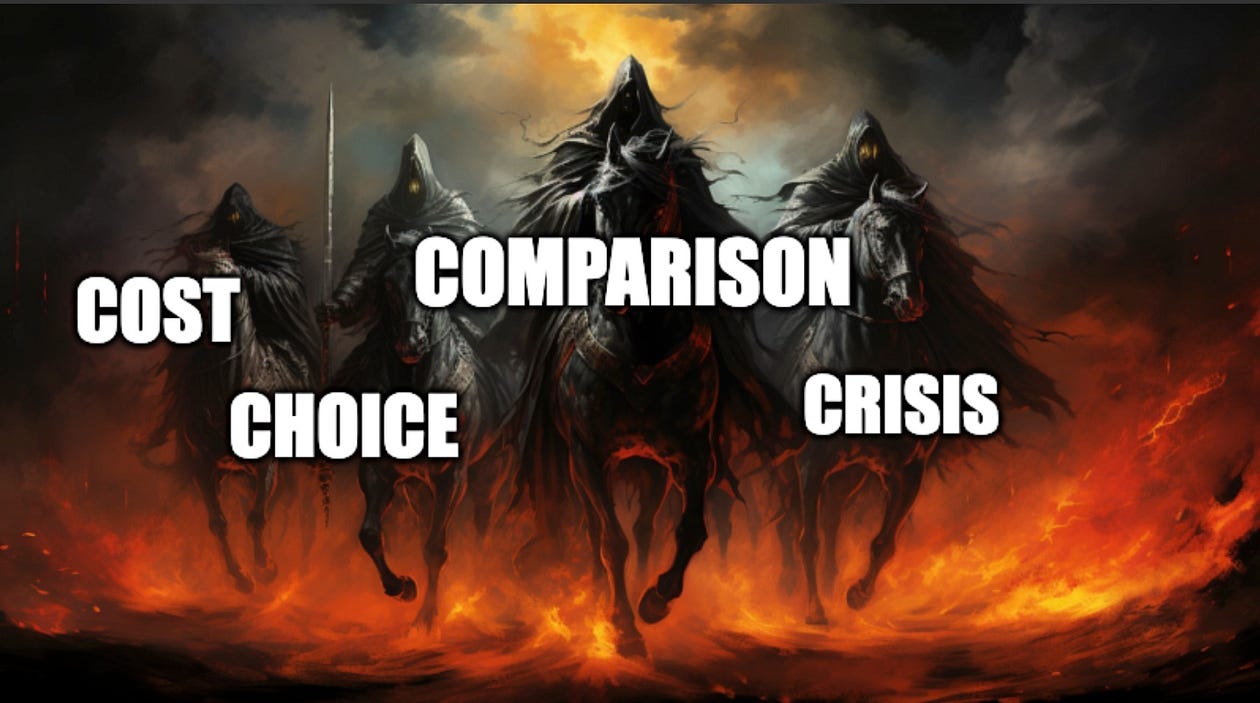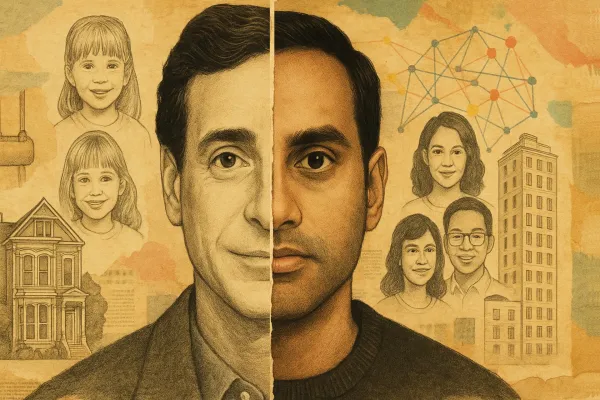Last month, I published a piece that started with what seemed like a simple observation: thirty-year-olds today are nothing like thirty-year-olds from a generation ago.
I felt this shift was best illustrated with two popular TV sitcoms that happen to debut about three decades apart. The problem isn't just economic—it's psychological. We've created a generation trapped between the expectations set by 1980s sitcoms and the realities of 2025 capitalism.
You might call it "The Full House Fallacy". The persistent belief that adult life should unfold according to a script that no longer exists.
My piece below explores how we got here and why this mismatch between expectation and reality is causing a mental health crisis among high achievers.
Fair warning: if you're in your thirties, this might hit uncomfortably close to home.
Read the whole thing on Medium.
Don’t have a Medium membership? At five bucks a month for not just one but hundreds of thousand of authors, it is a great deal, but if you are out of free articles, you can click here.
Your Thirties Aren’t What They Used to Be
The 4 Forces That Made Modern Adulthood Really Freaking Hard
→ Catch the first article in this series: The Tyranny of Thirty
Imagine this: you live in San Francisco and work as a talk show host. A few years back, you bought a nice house for your wife and three daughters. Life is good.
Then the unthinkable happens. Your wife dies in a car accident caused by a drunk driver.
Your mom steps in to help with the kids for several months while you struggle to keep your talk show job and pay the bills. She convinces your brother-in-law and a close guy friend to move in and help you raise your girls.
Oh, and you just turned 30.
This is the situation at the start of Full House, which debuted in 1987 — a year after I was born — and ran for eight seasons.
Despite having limited TV time growing up, I still caught many episodes of this popular sitcom that made adult life as a middle-class white family seem achievable, a little chaotic, and plenty of fun. While many storylines would still make sense today — the challenges of raising children as a single parent, the generational drama, the financial balancing act — the show is grounded in different economic and cultural reality.
While every television show departs from reality in meaningful ways, they still aim to portray life as audiences would recognize it. In the late 80s and early 90s, the idea that you’d have a couple of kids by 30 and own a 3,700 sq ft home in San Francisco without a financial windfall or highly lucrative job wasn’t far-fetched.
And of course, not every adult in the show “had it all together.” Jesse starts out as a freewheeling musician, and Uncle Joey is a comic figuring out his own career and dating life. But the underlying premise that adult life progresses through orderly stages isn’t questioned — it’s treated as the natural expectation.
So what happened? Where did that version of adulthood go? Why does it now seem so impossible, so out of reach?
The Four Horseman of Modern Adulthood

It’s been said that happiness is reality minus expectations. The greater the expectations, the higher the likelihood that reality fails to live up to them. Full House didn’t create these expectations of having it all figured out by thirty on its own, but it certainly cemented a vision of comfortable, established living that felt achievable and normal.
Here’s the cruel irony: even as those expectations took root in our cultural zeitgeist over the show’s 192 episodes — syndicated and re-run countless times throughout the 90s and 00s — the structural foundations of adult life were fundamentally shifting beneath our feet. While we absorbed the Tanner Clan’s version of what thirty should look like, the realities of housing, healthcare, education, childcare, the job market, and our technology-driven world were making that vision increasingly impossible.
If Death, Famine, War, and Pestilence were the traditional four horsemen of the apocalypse, consider these the four horsemen of the millennial and Gen Z era.
1. Cost
Everything, from housing to healthcare, education to childcare, costs much more. Since 1990, median home prices have grown 3.3x and childcare costs have grown by 2.6x Meanwhile the cost of tuition and fees for a four-year public college has grown 54% since just 2000. Compared to generations past, the major necessities of a stable and thriving adult life have become more expensive and thus difficult to attain.
This fact has implications for every area of your life: your career moves matter more, your financial decisions have greater stakes, the friends you have can help you climb or trap you in a socioeconomic state, romantic partnership is more fraught, family issues are a greater burden, and you have less time to invest in your health and wellbeing.

